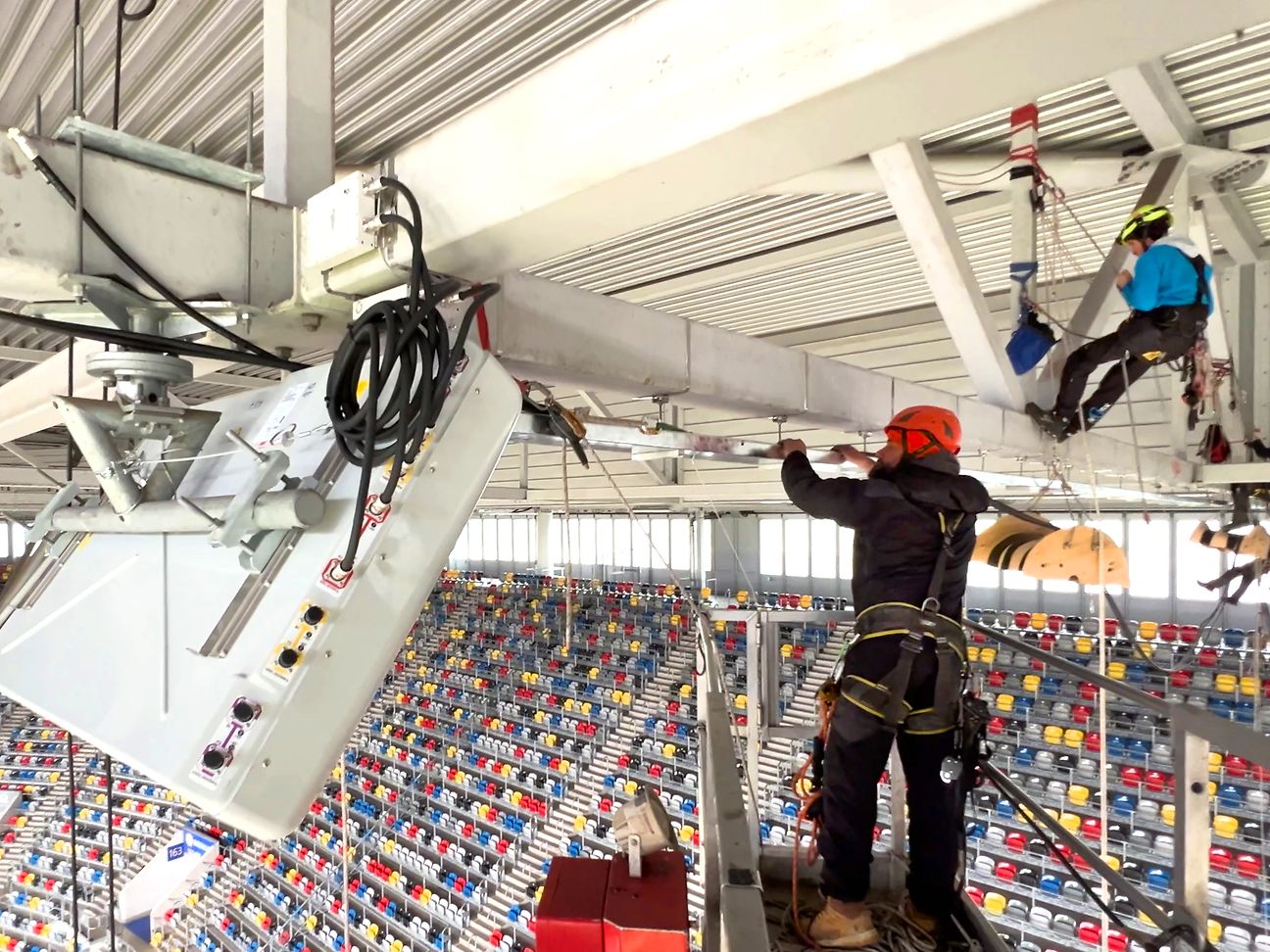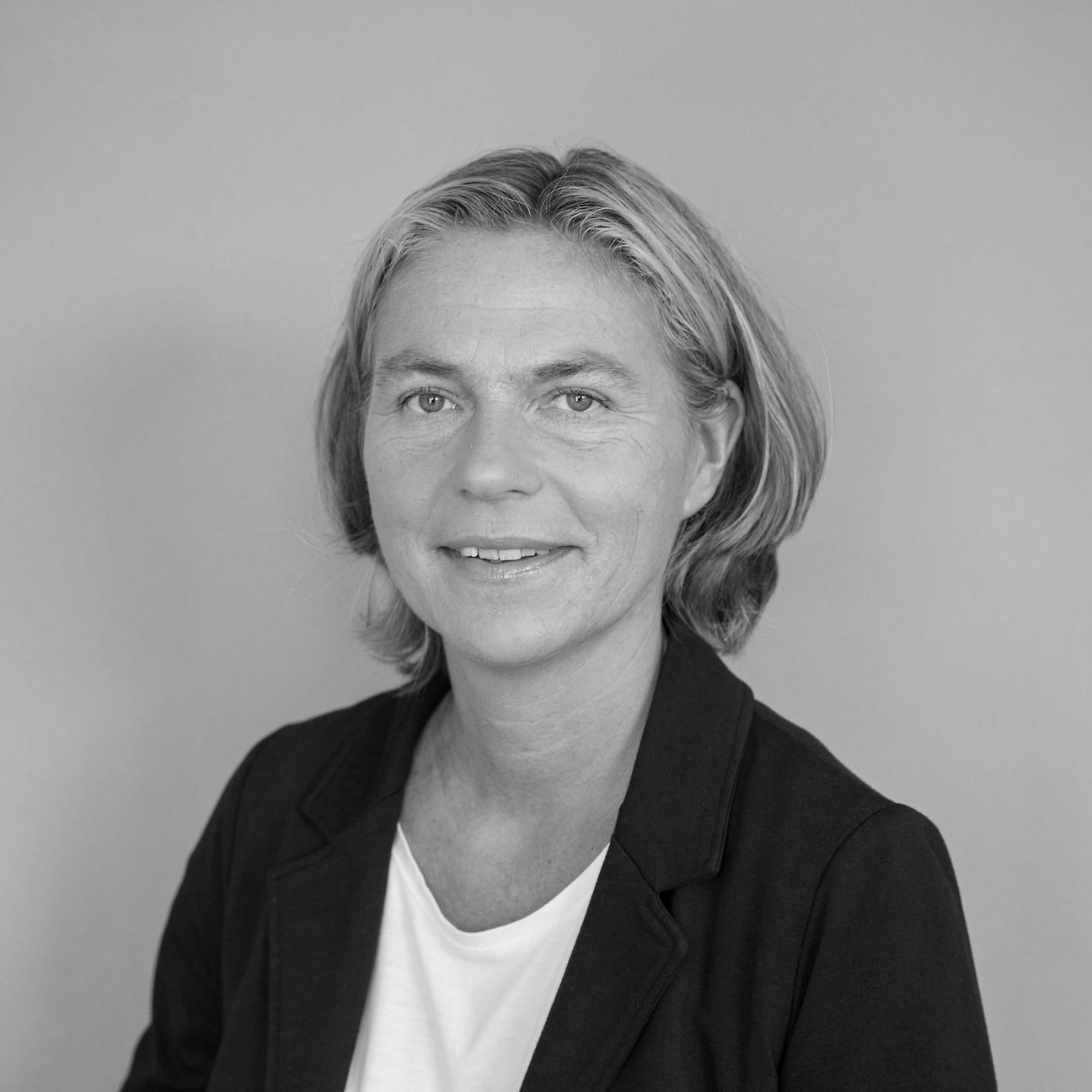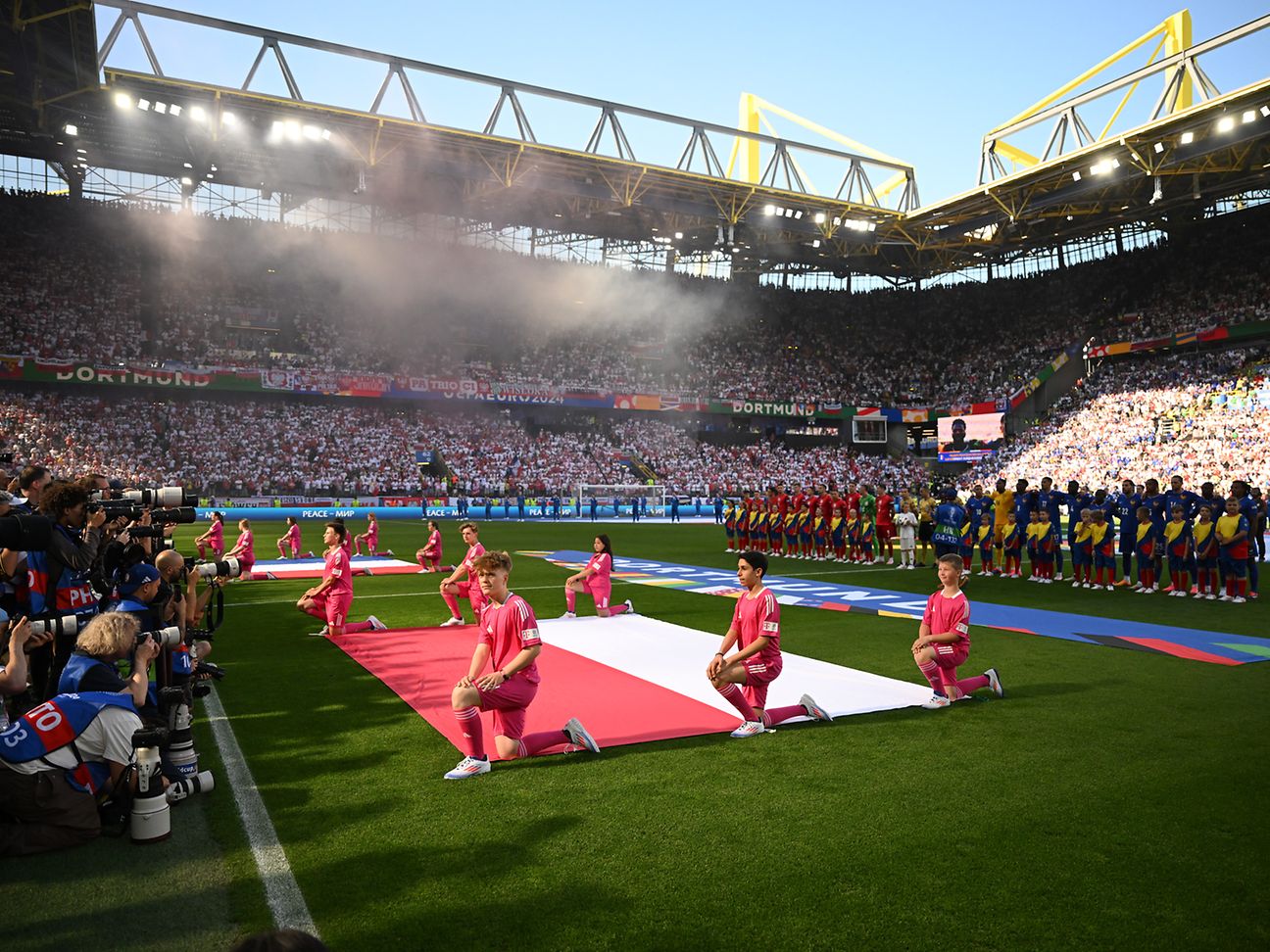

Telekom gets UEFA EURO 2024™ soccer stadiums in top technical shape
- Best mobile communications set-up: around 750 new 5G antennas for the stadiums.
- Concentrated data power: Three times more data throughput for fans in the stadiums.
- Network offensive for the fan miles: More mobile communications through temporary solutions.
- High speed for TV: fiber optic lines for TV images at up to 4 terabits per second.
The UEFA EURO 2024™ starts in just under three weeks and preparations are entering the final phase. Deutsche Telekom is getting the German soccer stadiums in top technical shape for the tournament. Within the stadiums, it is ensuring the best connectivity and high-speed via 5G and fiber optics. Deutsche Telekom has once again significantly expanded its mobile network in all ten arenas. In total, it has installed around 750 new 5G antennas in the stadiums for UEFA EURO 2024™. 300 of these provide the stands with the fans, and around 450 the indoor areas such as the catacombs and media areas. Deutsche Telekom is also making the network around the stadiums particularly fit for the fans. A total of 38 temporary coverage areas for fan zones, train stations or team quarters ensure the best mobile phone connections. Telekom is installing around 65 new kilometers of fiber optics for the fixed network connection of the stadiums in order to send live images from the matches around the world. Deutsche Telekom is bringing well over 2,000 signal distributors (switches) and connection points for WLAN and cable into the stadiums.
“Our goal for this tournament is to provide the best network experience for our customers,” says Abdu Mudesir, CTO Telekom Deutschland. “Our network coverage is already at a very high level. During the European Championships, however, the network will be under even greater strain, especially in terms of capacity. Whether in the stadiums, fan zones, training grounds or at home with the fans - our networks are ready for the major event that is the European Championships. We have been working on this for months. Both in mobile communications and in the fixed network connection to the stadiums.”
Three times as much data throughput in mobile communications
Mobile communications must be fit for the data volumes of spectators at the European Championships. This applies above all in and around the stadiums and for the fan zones. Data traffic is particularly high at sporting events. The data throughput rate in the stadiums is now three times as high. Instead of up to 375 Mbit/s as before, Telekom was now able to measure up to 1.2 Gbit/s in the stands. This means that fans at the matches will experience noticeable improvements when surfing or sending messages.
Deutsche Telekom is fully committed to the 3.6 gigahertz frequency, which enables particularly fast transmission. This frequency is used in nine out of ten stadiums. Only in Cologne is this currently not possible for static reasons. Deutsche Telekom also uses 5G and LTE on the 900 megahertz, 1.8 gigahertz, 2.1 gigahertz and 2.6 gigahertz frequency bands. The expanded mobile coverage is already operational in all ten stadiums. The technology will remain in the stadiums after the tournament and will then also provide strong mobile coverage during the league matches.
More power for the fan zones
For UEFA EURO 2024™, the technical teams are also expanding existing sites and deploying 38 temporary solutions. These are mobile antennas that provide mobile communications for heavily frequented areas over a certain period of time. The fan zones are a particular focus. The largest fan mile in Berlin at the Reichstag will receive special coverage for the tournament, as will the fan zones and public viewings in Dortmund, Düsseldorf, Hamburg, Cologne and Stuttgart.
The “mobile phone mast to go” will be used 18 times. This container with 5G and LTE antennas is one of Deutsche Telekom's own innovations and can be set up and deployed in a very short space of time.
65 kilometers of new fiber optic lines in the stadiums
The fixed network will also play an important role in the UEFA Euro 2024™ stadiums. A total of around 65 kilometers of new fiber optic lines will be laid in the stadiums. The main task of the fixed network cabling in the stadiums is to provide the media with sufficient capacity and speed for their video and audio reporting. In addition to the fiber optic cables, over 900 additional switches and over 1,300 access points are being installed in the stadiums for this purpose. Switches are distributors that bring communication to every corner. The media, helpers and officials then receive their data access via Wi-Fi via the access points. In addition, 53 dedicated 5G routers provide the media with fast internet via mobile communications. Critical areas such as the media grandstand are protected against outages with special high-availability solutions. Some of the hardware will continue to be used in the stadiums after the tournament or will be used by Telekom at other events.
The expansion of stadium technology is absolutely essential for major events such as UEFA Euro 2024™. For example, around 1,200 media representatives are expected to attend the final in Berlin's Olympic Stadium. In a normal league game it is about 80. The majority of the switches have already been installed in the stadiums and some of the cabling has also been completed. The remaining work can now start after the end of the Bundesliga season. The stadiums will then be ready for the final touches.
Fiber optics for images that go around the world
Each stadium is connected to the UEFA International Broadcasting Center (IBC) in Leipzig with two redundant fiber optic lines. It is ensured that these two connections are routed completely separately from each other through the Telekom network. From the IBC, the signals are sent out into the world as television pictures. Each of the fiber optic lines has a capacity of 200 gigabits per second, meaning that a total of four terabits per second of data can arrive at the IBC simultaneously via the fiber optic connections. From the IBC in Leipzig, the signals are also transmitted via Telekom's fiber optics to the 14 official UEFA fan zones, where public viewings are held for the fans.
About Deutsche Telekom: Deutsche Telekom Group profile


